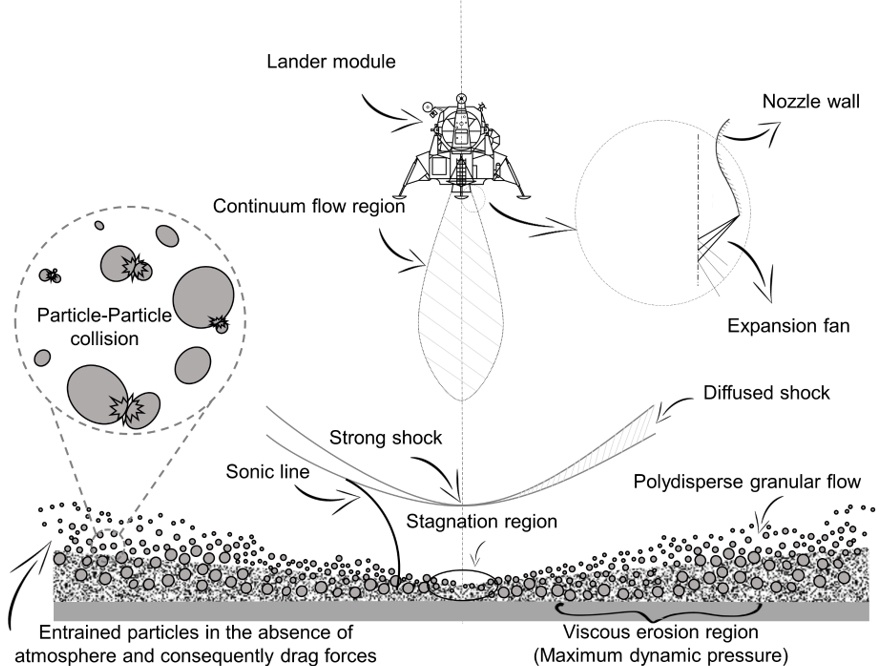I really can’t believe that the Ingenuity helicopter on Mars took its maiden voyage in April 2021. On the 16th April 2024, engineers at NASA have received the final batch of data from the craft which marks the final task of the team. Ingenuity’s work is not over though as it will remain on the surface collecting data. For the engineers at NASA, they have their sights set on Dragonfly, a new helicopter destined for Titan.
Continue reading “The Ingenuity Team Downloads the Final Data from the Mars Helicopter. The Mission is Over”Perseverance Gives Us One Last Look at the Damaged Ingenuity Helicopter
Well I consider that a success; the first aircraft on another world surpassed all expectations. Ingenuity, the helicopter that has been buzzing around on Mars has finally reached the end of its life after a total of 72 flights on the red planet. In a wonderful piece of computer imagery, Simeon Schmauß took a number of images of Ingeniuty from Perseverance and stiched them together into a mosaic and upscaled to provide a human eye view.
Continue reading “Perseverance Gives Us One Last Look at the Damaged Ingenuity Helicopter”Future Mars Helicopters Could Explore Lava Tubes

The exploration of Mars continues, with many nations sending robotic missions to search for evidence of past life and learn more about the evolution of the planet’s geology and climate. As of the penning of the article, there are ten missions exploring the Red Planet, a combination of orbiters, landers, rovers, and one helicopter (Ingenuity). Looking to the future, NASA and other space agencies are eyeing concepts that will allow them to explore farther into the Red Planet, including previously inaccessible places. In particular, there is considerable interest in exploring the stable lava tubes that run beneath the Martian surface.
These tubes may be a treasure trove of scientific discoveries, containing water ice, organic molecules, and maybe even life! Even crewed mission proposals recommend establishing habitats within these tubes, where astronauts would be sheltered from radiation, dust storms, and the extreme conditions on the surface. In a recent study from the University Politehnica Bucuresti (UPB), a team of engineers described how an autonomous Martian Inspection Drone (MID) inspired by the Inginuity helicopter could locate, enter, and study these lava tubes in detail.
Continue reading “Future Mars Helicopters Could Explore Lava Tubes”Ingenuity’s 69th Flight is its Farthest So Far

When NASA decided to send the little Ingenuity rotorcraft to Mars on the belly of the Perseverance rover, they weren’t certain of success. Nothing like it had ever been attempted in Mars’ extremely thin atmosphere. Mission planners hoped and planned for a total of five flights, enough for a technology demonstration.
But now, as almost everyone knows, Ingenuity has wildly exceeded NASA’s initial expectations.
Continue reading “Ingenuity’s 69th Flight is its Farthest So Far”NASA Tests its Next-Generation Mars Helicopter Blades

While NASA’s Ingenuity Mars Helicopter continues to break records for both airspeed and altitude while it explores Jezero Crater on the Red Planet, NASA engineers back on Earth are hard at work testing carbon fiber blades for next-generation Mars helicopters that could exceed the performance of Ingenuity on future missions to Mars, specifically with the planned Mars Sample Return mission that NASA hopes to accomplish sometime in the 2030s.
Continue reading “NASA Tests its Next-Generation Mars Helicopter Blades”NASA's Mars Helicopter Had an Unscheduled Landing, But Flew Again

The Ingenuity helicopter continues to explore the landscape around Jezero Crater on Mars, now more than 800 days into its original 30-day demonstration mission. Recently, Ingenuity completed its 54th flight on the Red Planet. However, things haven’t gone exactly to plan the past several weeks.
On its 53rd fight on July 22, 2023, the helicopter cut the flight short after one of its warnings was triggered, implementing the “LAND_NOW” protocol. Ingenuity should have flown for 136 seconds but was only in the air for 74 seconds before performing an emergency landing.
Continue reading “NASA's Mars Helicopter Had an Unscheduled Landing, But Flew Again”NASA and LEGO Continue Brick-Solid Partnership with Perseverance and Ingenuity LEGO Models

Engineers at NASA’s Jet Propulsion Laboratory (NASA-JPL) are busy keeping the Perseverance rover and Ingenuity helicopter functioning in Jezero Crater on Mars while these robotic explorers continue the search for ancient microbial life on the Red Planet. But some of those same engineers have also been busy working with LEGO designers on new one-tenth-scale LEGO Technic buildable models of these very same robotic explorers with the goal of inspiring the next generation of NASA scientists and engineers.
Continue reading “NASA and LEGO Continue Brick-Solid Partnership with Perseverance and Ingenuity LEGO Models”NASA's Mars Helicopter Went Silent for Six Agonizing Days
NASA’s Ingenuity helicopter on Mars has exceeded everyone’s expectations, recently completing its 51st flight when it was supposed to fly just a few times as a demonstration mission. But flights 50 and 51 almost didn’t happen.
In a recent blog post, Travis Brown, Chief Engineer for Ingenuity shared how the team lost contact with the tiny rotorcraft for six excruciating days.
Continue reading “NASA's Mars Helicopter Went Silent for Six Agonizing Days”It’s Time to Figure Out How to Land Large Spacecraft Safely on Other Worlds

One of the most iconic events in history is Apollo 11 landing on the lunar surface. During the descent, astronauts Neil Armstrong and Edwin “Buzz” Aldrin are heard relaying commands and data back and forth to mission control across 385,000 kilometers (240,000 miles) of outer space as the lunar module “Eagle” slowly inched its way into the history books.
In the final moments before touchdown, Aldrin can be heard saying, “Picking up some dust”, followed by large dust clouds shooting outward from underneath from the spacecraft as the exhaust plumes interacted with the lunar surface, more commonly known as brownout or brownout effect. This significantly reduced the visibility for Armstrong and Aldrin as they landed, and while they successfully touched down on the Moon, future astronauts might not be so lucky.
Continue reading “It’s Time to Figure Out How to Land Large Spacecraft Safely on Other Worlds”Perseverance Watches Carefully as Ingenuity Lifts Off for its 47th Flight

In some of the best footage yet, the Perseverance rover has taken new video of the Ingenuity helicopter taking off and flying over Mars’ surface.
Continue reading “Perseverance Watches Carefully as Ingenuity Lifts Off for its 47th Flight”


